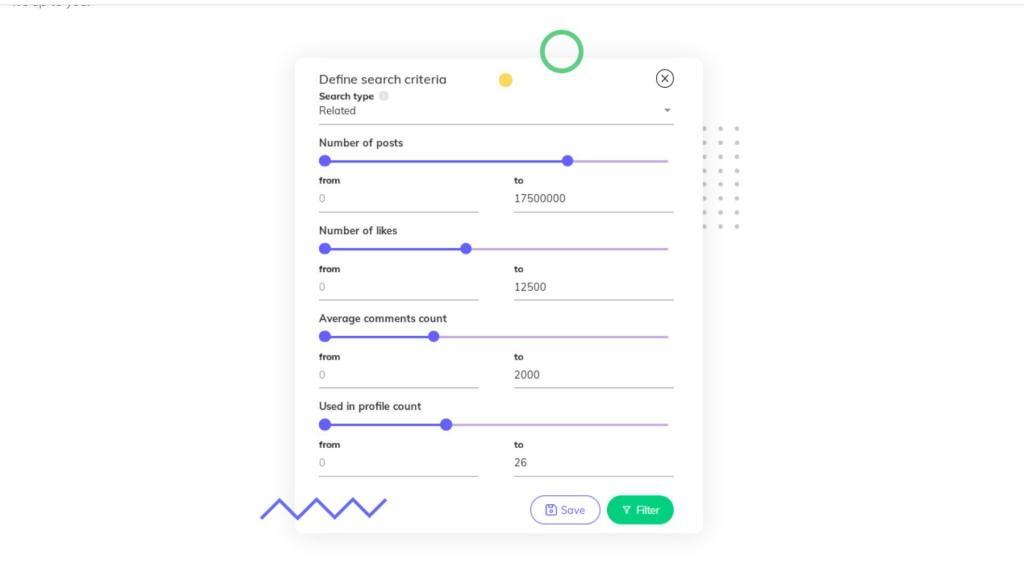
Foodie Hashtags To Grow Instagram, TikTok, Twitter

If you want to grow a food business on social media for the first time, you need to learn about hashtags! Food hashtags are challenging if you’ve never used them before, but after reading this post, you should be confident enough to get started.
You might be a restaurant, chef, bread baker or foodie with a message you want to share, but how do you get people to see you? Understanding how hashtags work, particularly, Instagram food hashtags and sourdough bread hashtags enables you to distribute your Instagram posts to a wider audience.
Why do people use food hashtags in their posts?
Hashtag use rocketed as Instagram became the social app of choice for many. They are now used in a variety of social apps to categorise social media posts.
Using food hashtags when posting Instagram images will place them into a database where people who enjoy related content can see them.
Users can follow hashtags for food (or whatever topic they want!). However, the algorithms used by social apps are incredibly effective at recommending content that users want to see! Users will be recommended content based on the creators and hashtags they have enjoyed before, not necessarily the ones they have subscribed to.
Adding food hashtags to your posts on social media is a great way to build a following when you are just starting out on social media.
Providing your content is good, and the correct hashtags are used, your posts will get in front of your target audience. Views will hopefully lead to others interacting and following your account.
Why should I care about popular food hashtags?
Choosing the best food hashtags for your posts will greatly impact who sees them.
Utilising popular food hashtags with large followings can seem tempting, but unless you’re already a popular artist in your field, this method will probably not work. The likelihood is that your posts will be continually pushed to the back of the queue, with the algorithm favouring content from established contributors with bigger accounts.
Hashtags with small followings can work, but selecting the right ones for your account requires a bit of skill where despite more opportunity for views, you can end up in the echo chamber!
How to find new foodie hashtags
The first thing to do is create an account on IQHashtags. This app allows you to access usage and difficulty data to make informed choices on potential hashtags.
The first step is to find 10-20 similar posts. Ideal posts will be ones from small accounts that have had many interactions. Ignore accounts with millions of followers.

Copy the hashtags used on the posts to a notepad. Remove any duplicates.
Then using IQHashtags, check the difficulty vs usage for each hashtag. You’ll also see suggestions, so check those out as well.

What are the best food hashtags for new accounts?
Aim for a variety of difficulties and hashtag popularity. You can add up to 30 hashtags on Instagram, 2 on Twitter and as many as you like within 100 characters on TikTok.
So include relevant hashtags as well as popular hashtags in the mix. These will help the algorithm determine what the content is about and might (just might) lead to you going viral!
The majority of the hashtags should be low competition. These consist of niche-related hashtags and other low-competition foodie hashtags with higher usage. Aim for a minimum usage of 10,000 to ensure you have enough views.
Why low competition isn’t always easy
The challenge is how to find the best food hashtags for you! When researching hashtags, you are bound to find one with low competition but a reasonable search volume. It happens. There is always one!
But social media isn’t as easy as just adding the hashtag to a luscious image of your lunch. There needs to be relevance between your content and its intended audience.
Twitter, Instagram and TikTok have search functions, so type in the hashtag to see what others are using it for.
It could be that its intended use is for a product or company completely unrelated to what you intend to post. If that’s the case, ditch it.
It’s also possible that it’s a style of food or a competitor’s name in your area of expertise. If this is the case, only use the hashtag if you’re confident you won’t offend or upset other users (unless you enjoy that sort of thing).
Your hashtags must be relevant to the user when focusing on smaller niches. If you, for example, use the hashtag #chocolate house for an image of you eating a chocolate egg, its followers will ignore your image if shown. The algorithm will think your post is poor and not show it to others.
What are the best foodie hashtags?
Before you start creating your photo or videos, research which hashtags you intend to apply.
Where can I use hashtags for food?
Add food hashtags to every Instagram post, Instagram reel, Facebook post, TikTok video, Twitter post or Tumblr post. Of course, keep them related hashtags, for example, food hashtags!
How to add food hashtags
To “tag” a social media post or video, copy and paste your chosen foodie hashtags into the caption or description of the post. When posting on Instagram, you can use the share to Facebook option to cross-post on your Facebook page.
Many users pop their hashtags in the first comment of the post on Instagram. This means they have enough room to put their recipe method or best bread quotes for Instagram in the caption section so they don’t run out of space!
To tidy up my posts when using multiple platforms, I use an app called Publer. It lets me share the same post across all my social media accounts but tweak the content before I hit send! I can also batch my posts and schedule them across the week with it – a massive efficiency saver!
When shouldn’t I use food hashtags?
There is no reason not to use food hashtags. They won’t cause any harm. However, when working with a character limit on TikTok or a hashtag limit on Twitter, only use the top relevant hashtags, it’s not a wishlist!
What hashtags generate the most likes?
With a brand new account, even if you apply the best Instagram hashtags to your images, don’t be surprised if you don’t go viral!
Building up a follower on Instagram and any social media app will take a while. Keep going with the right hashtags, and you’ll slowly grow.
Growth is exponential, so the more you post your popular food with the best hashtags, the more likes and followers you can expect.
How to get ideas for new posts?
Foodies are spoilt for choice as you eat several times a day! The challenge is to capture that perfect image that creates an image or video that engages the viewer.
The best thing is to start! Over time you’ll gradually find the best lighting, camera settings and backgrounds.
If you find it easier to say you’ll do it tomorrow, you might find writing a plan of your intended images wise. This way, you can get prepared for the shot beforehand.
If you are a chef or baker, you could set up your camera and lighting before your cook.
If you go to restaurants to take photos or vlog about food, you might want to clear it with the restaurant beforehand and ask for a quieter table before your brunch comes out of the kitchen!
Or, if you are out and about to take food photos, identify a good backdrop before you snap. Remember, it’s not just the food that gets those taste buds tingling!
Most popular food hashtags
The more popular general food hashtags are:
- #Food
- #FoodPorn
- #Yummy
- #Foodie
- #Delicious
- #Dinner
- #Breakfast
- #Yum
- #Lunch
- #Homemade
- #Insta foodie
But popular hashtags are unlikely to be the best ones for you. Use the tips in this guide to find the best hashtags to grow your Instagram account, TikTok followers, or Tumblr comments!
If you’ve enjoyed this article and wish to treat me to a coffee, you can by following the link below – Thanks x

Hi, I’m Gareth Busby, a baking coach, senior baker and bread-baking fanatic! My aim is to use science, techniques and 15 years of baking experience to make you a better baker.
Table of Contents
- Why do people use food hashtags in their posts?
- Why should I care about popular food hashtags?
- How to find new foodie hashtags
- What are the best food hashtags for new accounts?
- Why low competition isn’t always easy
- What are the best foodie hashtags?
- Where can I use hashtags for food?
- How to add food hashtags
- When shouldn’t I use food hashtags?
- What hashtags generate the most likes?
- How to get ideas for new posts?
- Most popular food hashtags
Related Recipes
Related Articles
Latest Articles
Baking Categories
Disclaimer
Address
53 Greystone Avenue
Worthing
West Sussex
BN13 1LR
UK








Leave a Reply